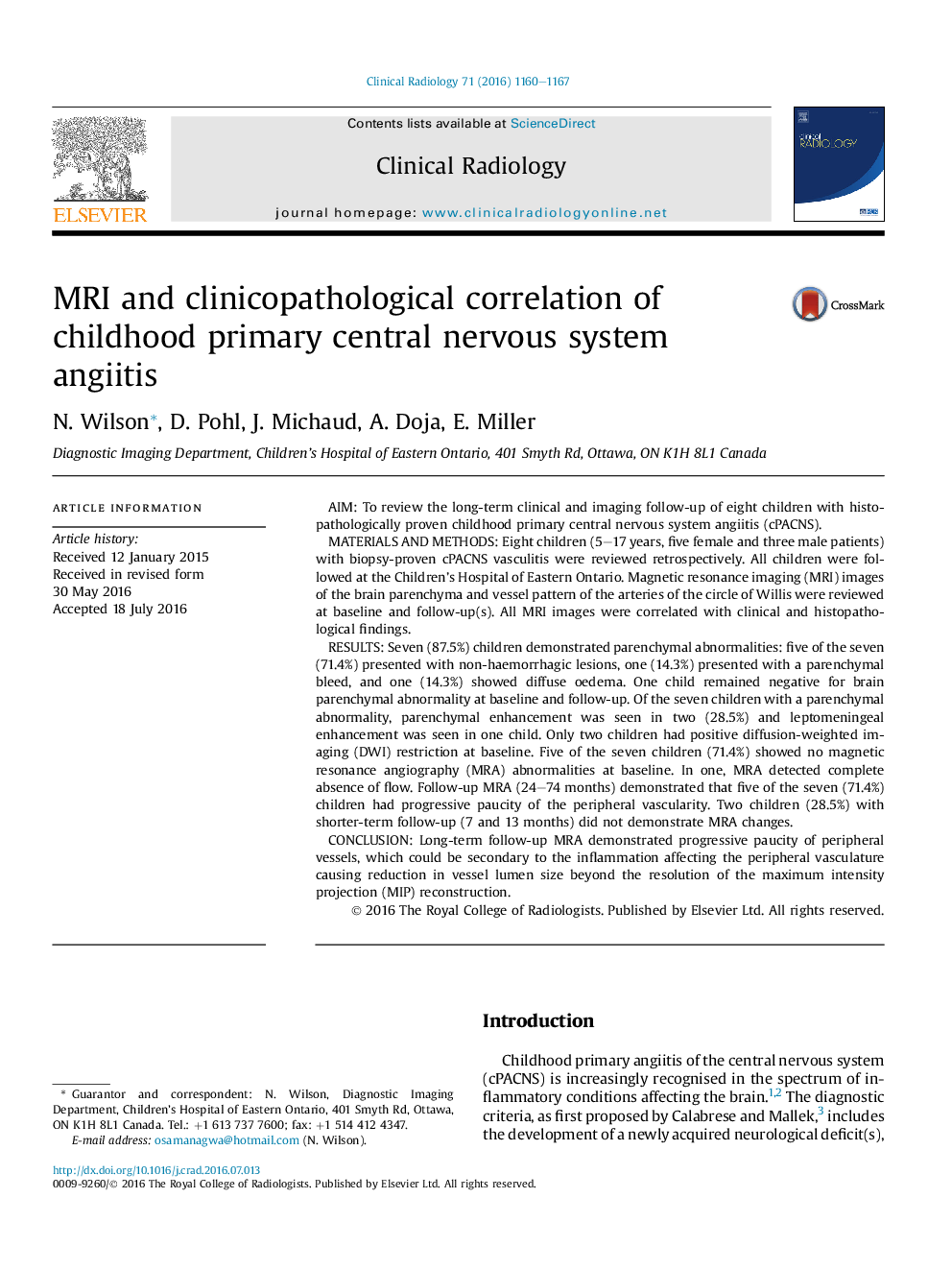| Article ID | Journal | Published Year | Pages | File Type |
|---|---|---|---|---|
| 3981118 | Clinical Radiology | 2016 | 8 Pages |
•MRI is the preferred technique to evaluate parenchymal lesions in cPACNS, but it is not specific.•Angiography is negative in small-vessel cPACNS.•Brain biopsy is necessary to confirm the diagnosis.•Long term follow-up MRA in cPACNS demonstrates progressive paucity of peripheral arteries.•It could be secondary to the inflammatory vascular changes and progressive decrease in their size beyond the resolution capability of MRA.
AimTo review the long-term clinical and imaging follow-up of eight children with histopathologically proven childhood primary central nervous system angiitis (cPACNS).Materials and methodsEight children (5–17 years, five female and three male patients) with biopsy-proven cPACNS vasculitis were reviewed retrospectively. All children were followed at the Children's Hospital of Eastern Ontario. Magnetic resonance imaging (MRI) images of the brain parenchyma and vessel pattern of the arteries of the circle of Willis were reviewed at baseline and follow-up(s). All MRI images were correlated with clinical and histopathological findings.ResultsSeven (87.5%) children demonstrated parenchymal abnormalities: five of the seven (71.4%) presented with non-haemorrhagic lesions, one (14.3%) presented with a parenchymal bleed, and one (14.3%) showed diffuse oedema. One child remained negative for brain parenchymal abnormality at baseline and follow-up. Of the seven children with a parenchymal abnormality, parenchymal enhancement was seen in two (28.5%) and leptomeningeal enhancement was seen in one child. Only two children had positive diffusion-weighted imaging (DWI) restriction at baseline. Five of the seven children (71.4%) showed no magnetic resonance angiography (MRA) abnormalities at baseline. In one, MRA detected complete absence of flow. Follow-up MRA (24–74 months) demonstrated that five of the seven (71.4%) children had progressive paucity of the peripheral vascularity. Two children (28.5%) with shorter-term follow-up (7 and 13 months) did not demonstrate MRA changes.ConclusionLong-term follow-up MRA demonstrated progressive paucity of peripheral vessels, which could be secondary to the inflammation affecting the peripheral vasculature causing reduction in vessel lumen size beyond the resolution of the maximum intensity projection (MIP) reconstruction.
